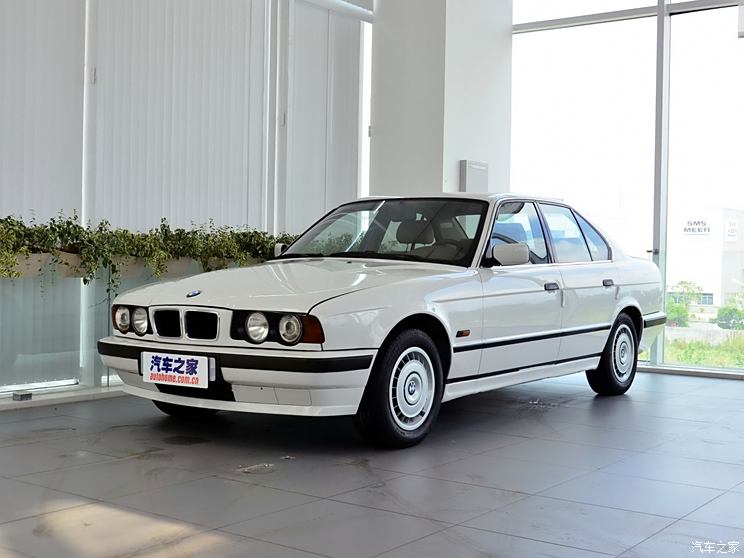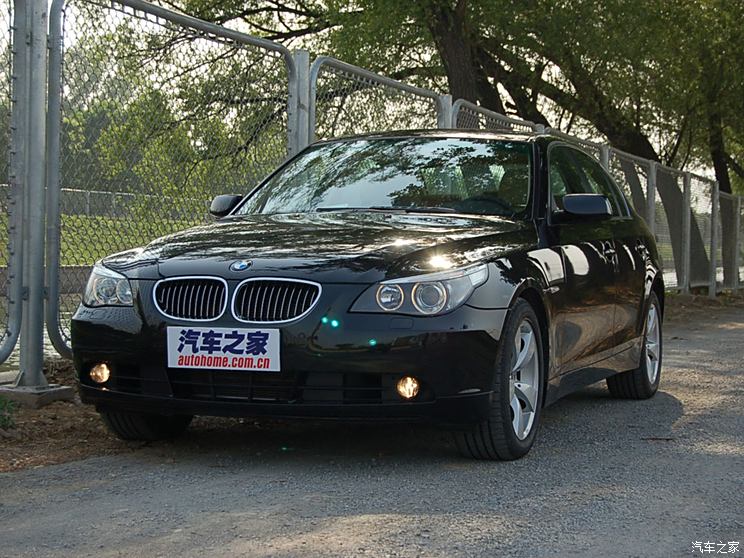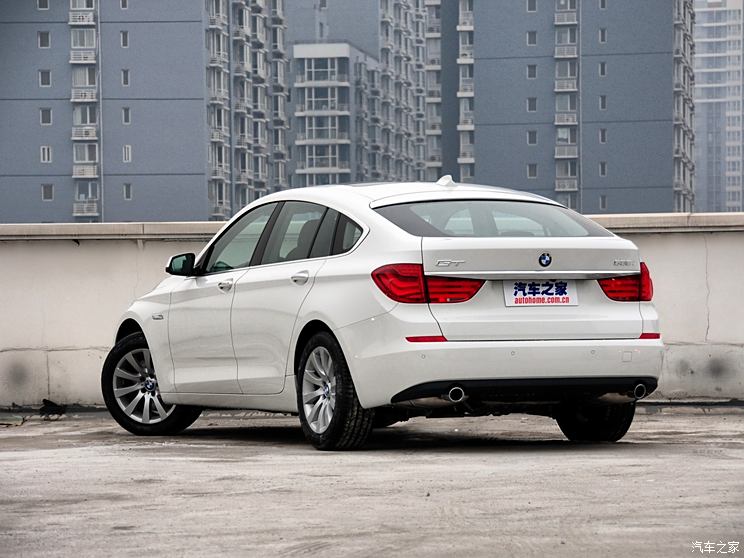In 2024, a new generation of BMW 5 Series made in China made its world debut.
[New Car Launch in car home] On May 24th, a new generation of BMW 5 Series (G60) and (|)(G60 BEV) made their debut. The new BMW 5 Series is scheduled to start production at the Dinggefen factory of BMW Group this summer, and will be listed in the world in October this year. According to the plan, the new domestic 5-series long wheelbase version (G68) and i5 will be put into production in January next year; At the same time, BMW will launch the pure electric BMW i5 wagon (G61bev) for the first time next spring. Around 2025, the brand-new M5 sedan (G90) will debut, and the anticipated M5 Touring(G99) will also appear in the product lineup.
More exciting videos are all on the car home video platform.





The appearance of the new BMW 5 Series continues the design style of sports aesthetics. Compared with the current BMW 5 Series, the front face is more tough and looks dynamic and powerful. The new car will be equipped with a ring-shaped grille and boomerang daytime running lights as the latest design of BMW brand, but the giant "big nostrils" design of BMW 7 series is not used, and the overall shape is relatively restrained. The four ribs raised on the front hood also make the front of the car look more sporty.





As a pure electric model introduced for the first time since the birth of the BMW 5 Series for more than 50 years, the overall appearance of the BMW i5 is slightly different from that of the eighth generation BMW 5 Series fuel version. The new car will be available in two versions: eDrive 40 and M60 xDrive, in which the chrome grille style of eDrive 40 is closer to the fuel car, while M60 xDrive adopts a closed kidney grille which is more in line with the current design trend of electric vehicles, and has been blackened. Blue elements are added inside the new headlight group to highlight its identity as an electric vehicle.





Semi-hidden door handle flush with the door, flat roof antenna make the side of BMW 5 Series look smoother, and the iconic "Hough Corner" of the rear door is integrated with the C-pillar. This idea is reflected in the current BMW 3 Series and 7 Series, and BMW has also added the details of the embossed number "5" on the black plaque, which is self-evident. Compared with the previous generation models, the dimensions, length, width and height of the new 5-Series car body are 5060/1900/1515mm, respectively, which are 97mm, 32mm and 36mm higher than the previous generation models, and the wheelbase is increased by 20mm to 2995mm. Coordinated and nearly perfect car body proportion is still the consistent advantage of the standard 5-Series wheelbase.








The obvious change in the tail is the lamp group, which adopts simple horizontal lines, making the visual effect more slender and exquisite, and redesigns the cover to better fit the vehicle shape on the profile. In addition, the BMW i5 is surrounded by a black tail diffuser, which looks very thick and sporty. The official said that the new BMW 5 Series will have two exterior optional packages, M Sport Package and M Sport Package Pro, to further enhance its sporty temperament.






The interior also adopts the latest family style, including the continuous screen design of 12.3-inch instrument +14.9-inch central control panel, and the new style sports steering wheel. The new car will be equipped with iDrive 8.5 system, and the intelligence will be further improved. IDrive 8.5 is developed based on Linux system, and the new system introduces the design of QuickSelect to improve the menu structure, so that drivers can access the set common functions quickly and conveniently. At the same time, BMW has also optimized the entrance logic of functions, and the entrance of applications and vehicle settings is more intuitive. The applications on the menu can also be adjusted according to the user’s usage habits and preferences.





IDrive 8.5 system introduces the AirConsole platform for the first time, which provides video playing and game functions to kill boring charging time for drivers and passengers in the car. The BMW Digital Key Plus digital key can be used for smartphones with iOS or Android operating systems, as well as Apple Watch. The embracing interactive atmosphere light strip similar to the 7 series has a new form on the brand-new 5 series-the central area of the instrument panel and the rest area can even be displayed in color separation. The flagship Baohua Weijian audio also appeared in the cockpit.
It is worth mentioning that the new 5 Series has introduced a new automatic driving assistance system Pro, which will be opened in the United States, Canada and Germany at the initial stage, integrating the Highway Assistant function, that is, the speed limit of following cars will be raised from 60km/h to 130km/h, and the system will be responsible for the distance and lane control, so that drivers can put their hands in a comfortable position and keep an eye on the road and traffic conditions.
In addition, an innovative function-the automatic lane change function of human eye activation control has been added. When traffic conditions permit, the driver only needs to look at the rearview mirror, so that the vehicle can start to complete the automatic lane change operation, which involves the necessary speed adjustment and steering, and the speed is limited to less than 130 km/h.



In terms of power, the new BMW 5 Series will continue to provide fuel version and plug-in hybrid version, in which the fuel version will be equipped with 2.0T and 3.0T engines, covering 520i, 530i, 530i xDrive and 540i xDrive models, and provide two diesel versions of 520d and 520d xDrive models. Plug-in hybrid versions 530e and 550e xDrive will be launched in the spring of 2024. It is expected that China will continue to provide two power specifications, 525Li and 530Li, corresponding to the standard power and high power of 2.0T four cylinders.


BMW i5 adopts the upgraded fifth-generation eDrive electric drive system, which provides two kinds of power, eDrive 40 and M60 xDrive. The entry-level model will be equipped with a rear motor, with a maximum power of 340 HP and a peak torque of 430 Nm. The 0-100km/h acceleration time is 6.0 seconds and the top speed reaches 193 km/h. As a version of M Performance, the M60 xDrive is equipped with stronger dual motors, sharing the powertrain with iX M60, with a maximum power of 601 HP and a peak torque of 820 Nm. Officially, its 0-100km/h acceleration time is 3.8 seconds, and its top speed is limited to 230 km/h. Future domestic models may be eDrive40L and xDrive40L l.
In order to make effective use of space, the 81.2kWh high-voltage battery pack of BMW i5 is placed under the car body. The cruising range of eDrive 40 is about 497-582km under WLTP, while that of M60 xDrive is 455-516km. For reference, the prices of the eDrive 40 and the M60 xDrive models in the US market are US$ 67,795 and US$ 85,095 respectively (equivalent to RMB478,000 and RMB600,000).
● Car history

In 1972, the first-generation BMW 5 Series (E12) was officially unveiled at the Frankfurt Motor Show. It adopted a brand-new naming method of "5 Series" (the fifth new car series after BMW 700, BMW Neue Klasse, BMW New Six and BMW CS). The "5" in the rear logo represents its car series, the last two digits represent the engine displacement, and the last letter represents the power form. The 5 Series is the first BMW with the naming method of "Digital+Series". Before that, the name of BMW model was complicated, and its birth also opened a brand-new classic design era for BMW.

In order to meet the demand of consumers for sports models, BMW began to launch special upgrade services for the first generation of 5 Series cars. Finally, in 1980, BMW simply introduced the official sports version of the BMW 5 Series-M535i, which was equipped with a three-spoke sports steering wheel, RECARO sports seats and 14-inch alloy wheels produced by BBS, and was equipped with a 3.5-liter inline six-cylinder naturally aspirated fuel injection engine with a maximum power of 218 HP (160 kW)/5,200 rpm and a maximum torque of 310 N m. From 1972 to 1984, the first generation BMW 5 Series produced a total of 699,094 units. As the first model of the new car series, the BMW 5 Series (E12) has achieved great success in both sales volume and market recognition.

In 1981, the second-generation BMW 5 Series (E28) came out with a more powerful front nose and rear end, and the double kidney air intake grille was separated for the first time. The high beam and running lights used round headlights with different diameters, which made the visual impression more full. Although the body size is similar to that of the first generation, its sports style is more intense. Its power selection ranges from 90 horsepower to 184 horsepower, and then it is extended to the first diesel version of the BMW family-524 TD. The 2.4-liter straight six-cylinder turbocharged diesel engine can output up to 115 horsepower.

M535i, which made the first generation BMW 5 Series shine, appeared in the catalogue of the second generation in 1985. Seven months later, an M5, which was completely built by BMW Sports Department based on BMW 5 Series (E28), was officially launched. BMW decided to sell 500 M5(E28) in the European market, but the number of orders received since then far exceeded BMW’s expectations, reaching four times the original number. From 1981 to 1988, the second generation BMW 5 Series produced a total of 722,328 units. Such brilliant achievements laid a solid foundation for the research and development of the next generation models.

In 1988, the third-generation BMW 5 Series (E34) officially appeared to the public. The front face shape was still the "golden combination" of the four round headlights and the double kidney grille, but the designer deliberately enlarged the "double kidney" and wrapped it in the decoration of the same color as the body while reducing the area of the air intake grille as a whole. This generation of 5 Series not only shows Bavarian muscular sense in appearance, but also the power selection of up to eleven engines is even more daunting. The power of these engines has jumped from 113 horsepower in the 518i to 340 horsepower in the M5.

In 1991, the third-generation BMW 5 Series began to provide travel cars, and the rear window that can be opened separately on the trunk lid was hailed as the finishing touch. A hybrid concept car based on the 3rd generation BMW 5 Series also appeared in 1994. It is worth mentioning that in 1991, with the unloading of a 518i in Tianjin Port, BMW officially entered the eyes of consumers in China. From 1988 to 1996, the third generation BMW 5 Series produced a total of 1,333,412 units, which was almost twice that of the previous generation BMW 5 Series, and the status of the 5 Series model was further pushed to a new height.

In 1992, BMW welcomed an epoch-making design director-chris bangle from the United States. "Cars are not only vehicles or industrial products, but also represent the personality of brands and users." Chris bangle’s famous professional motto was verified in 1995. In 1995, the fourth generation BMW 5 Series (E39) was released, which was the first BMW model designed by Bangor. He designed lampshades for the two iconic round headlights of the 5 Series, and in 2000, he upgraded the "angel eye" design of the daytime running light ring, which, together with the kidney air intake grille, became an unforgettable BMW family element in the future. From 1995 to 2004, the fourth generation BMW 5 Series sold more than 1.5 million units in the world, which proved that Bangor had made great achievements in the transformation of 5 Series design style.

Time came in 2003, and the fifth generation BMW 5 Series (E60) was released. Bangor continued to develop his own advanced design ideas, but compared with the previous generation, the design of E60 brought overwhelming doubts. Its iconic "nostril" has become the largest double kidney air intake grille in the history of Series 5, and it has become more and more rounded from the rectangle. The headlights with "angel eyes" have also changed the more traditional style in the past. The rising eyebrows and irregular headlights make it difficult for loyal BMW fans to accept them for a while. Has the 5 Series lost its way? Any problem can be solved by time. Today, when you look at its modeling design again, you will find that it is still out of date.




This generation of BMW M5 is equipped with BMW’s landmark 5.0-liter V10 naturally aspirated engine (S85B50A), with a maximum power of 507 HP (373kW)/7750rpm and a maximum torque of 520 N m/6100 rpm. The engine is matched with a 7-speed SMG gearbox, with a maximum speed of 250km/h under electronic speed limit and a maximum speed of 315km/h after the speed limit is lifted. At the same time, in March 2003, BMW Brilliance was formally established and put into production in July of the same year. At the end of 2006, the long wheelbase version of BMW 5 Series Li was specially built for the China market, which successfully set a new benchmark in terms of ride space and functional equipment. By the end of production suspension in 2010, the fifth generation BMW 5 Series had sold more than 1.4 million vehicles.

In 2009, chris bangle suddenly announced his resignation as the design director of BMW, and Adrian Van Hooydonk, a Dutchman who joined the BMW Group with him in 1992, took his place. In 2010, the sixth generation BMW 5 Series (F10) was officially released, and the new generation 5 Series won incredible praise after boldly subverting the design of the Bangor era. Unfortunately, this generation of BMW M5 no longer uses the 5.0-liter V10 naturally aspirated engine of the previous generation M5(E60), but uses the 4.4-liter V8 twin-turbo engine on X5 M and X6 M with the code name S63B44.

In 2012, BMW 5 Series, which entered the era of high-efficiency turbine and interconnection, took the lead in launching the interconnected driving system and service in China, and was equipped with intelligent auxiliary functions such as BMW night vision system, blind spot warning system and panoramic camera with pedestrian recognition function. The derivative models of the 6th generation BMW 5 Series (F10), except the M5(F10), 5 Series (F10) standard wheelbase models and Travel Edition (F10) models, are sold in China by import, and the 5 Series GT(F07) is also introduced into China. In the end, the global sales volume of the sixth generation BMW 5 Series exceeded 2.2 million units.

The seventh generation BMW 5 Series (G30) was officially released in north american auto show, which opened in January 2017, and the domestic version was unveiled at the Shanghai Auto Show in April of the same year. According to the statistics of the Association, in 2022, the BMW 5 Series sold 171,142 cars in China. Even at the end of the product life cycle, the BMW 5 Series is the best-selling BMW in China market, and it is also the best-selling luxury brand car in China. If you want to know more about the history of BMW 5 Series (E12 to F10), please click "Review of BMW 5 Series History from Tradition to Innovation in 41 Years".
● Full text summary

Since its inception in 1972, the BMW 5 Series has changed eight generations of models, with a total delivery of nearly 10 million vehicles worldwide. It can be said that it is an "evergreen tree" in the field of luxury medium and large cars, and it is also one of the most successful models of the BMW brand. Close to the riding comfort of BMW 7 Series and the sports agility of BMW 3 Series; Strong dynamic appearance, continue to carry forward sports aesthetics; Considerate luxury and comfort, rich and complete technology configuration, the eighth generation BMW 5 Series once again comes with sincerity and strength. What’s more exciting is that the old rival of BMW 5 Series, Mercedes-Benz E-Class, will also be replaced this year, and their divine retribution will once again open a new chapter in history. Who are you picking? Welcome to discuss in the comments section. (Text/car home zhang xiaodan)